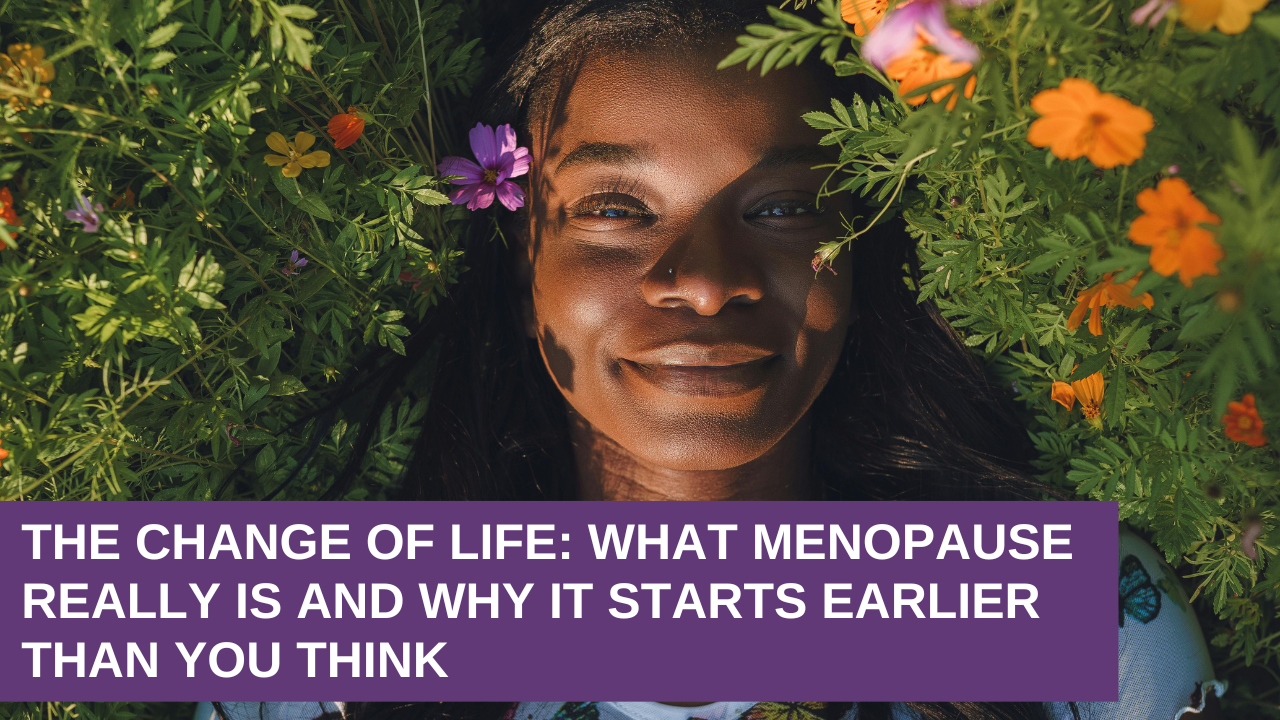Women are often taught that menopause is a single moment in time, usually somewhere in their fifties, when the menstrual cycle stops and life suddenly changes. The truth is far more complex.
Menopause is not a moment but a journey, one that begins much earlier than most women realize. It is a multi-year hormonal transition that touches every system of the body—from the brain and nervous system to metabolism, sleep, mood, digestion, bones, and skin.
Menopause is better understood as the third book in a woman’s life. The first book is the maiden. The second book is the mother. The third book is the crone, the wise woman. Unfortunately, most women enter this transition without guidance, without a map, and without understanding what is happening inside their bodies.
Here’s a clear roadmap to understanding that transition. It shows that menopause begins far earlier than the final menstrual period. It shows that symptoms that seem random or unrelated are actually part of a single hormonal pattern. And it shows what every woman needs to know in order to understand the change of life before it becomes overwhelming.
Menopause Begins Much Earlier Than Most Women Think
The medical definition of menopause is simple: menopause begins after twelve consecutive months without a period. This is the midpoint of the transition—not the beginning. The beginning often occurs a full decade earlier.
Many women in their mid-thirties or early forties enter a stage often called pre-menopause. This phase is rarely discussed, often ignored, and rarely diagnosed. Yet it is the first sign that the hormonal balance governing the reproductive years is beginning to shift.
During pre-menopause, progesterone declines before estrogen. This creates a hormone pattern known as estrogen dominance. Even if estrogen levels remain normal, the lack of progesterone makes estrogen more powerful. This imbalance can lead to heavier periods, more intense PMS, breast tenderness, mood changes, bloating, headaches, anxiety, sleep disturbances, spotting, or new digestive changes around the menstrual cycle.
Most women do not recognize these symptoms as hormonal. Many attribute them to stress, aging, or lifestyle changes. Providers often dismiss them because estrogen can still look normal on labs. But these symptoms are early signals from the body that the long transition toward menopause has begun.
Why Many Women Miss the Early Signs
Early hormonal changes can be difficult to detect on lab work. Hormones fluctuate throughout the cycle and throughout life, and a single blood test often fails to capture these shifts. Many women are told their levels look normal even when they do not feel normal.
Pre-menopause symptoms mimic many other conditions—anxiety, depression, thyroid imbalance, gut issues, and sleep disorders. As a result, many women spend years treating symptoms that are actually caused by progesterone decline.
The early signs of the change of life are subtle but meaningful. When women understand these signs, they are able to act earlier, support their hormonal balance, and prevent severe symptoms later in the transition.
The Role of the Hypothalamus
The hypothalamus—the master regulator of hormones—is at the center of menopause. It controls temperature, sleep, appetite, metabolism, stress, immunity, and menstrual cycles.
When progesterone declines, the hypothalamus begins working harder to maintain balance. When estrogen begins to fluctuate, it becomes even more strained. Symptoms such as hot flashes, brain fog, night sweats, sleep disruptions, anxiety spikes, and metabolic changes are not isolated events. They are signs of a single system struggling to maintain equilibrium.
Understanding this connection transforms the way women experience menopause. Instead of feeling like the body is falling apart, the process becomes logical, predictable, and manageable.
Menopause Is a Journey Through Four Phases
Menopause is a four-stage transition. Each stage has distinct signs and hormone patterns:
- Pre Menopause
- Perimenopause
- Menopause
- Post Menopause
Understanding the stages is essential because each one requires different care, different choices, and different expectations. The next article in this series explores these stages in detail.
Why This Knowledge Matters
When women understand the early signs, they stop blaming themselves. They stop feeling confused, overwhelmed, or unprepared. They begin to see menopause not as a decline but as a biological evolution.
The Change of Life is not a loss of fertility. It is the beginning of a new hormonal landscape—one that supports clarity, intuition, internal power, and wisdom.




0 Comments